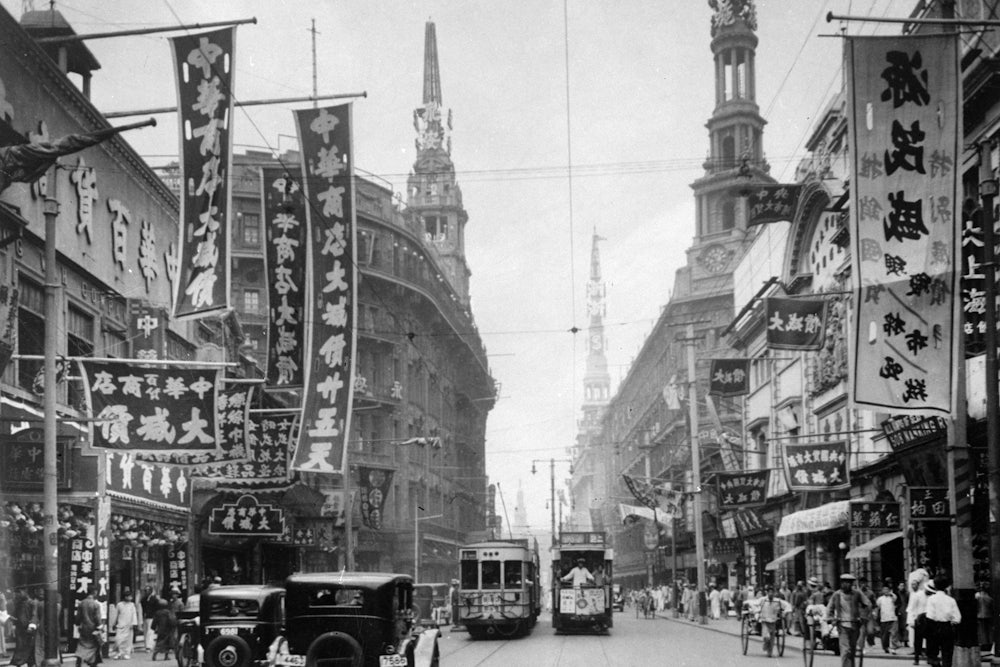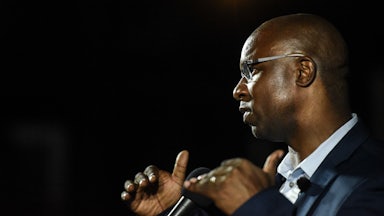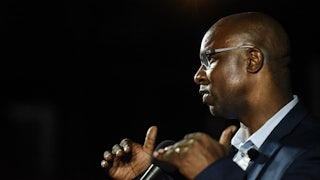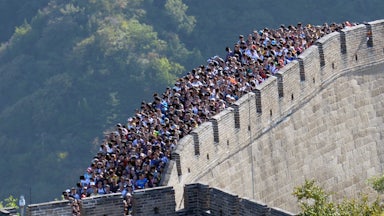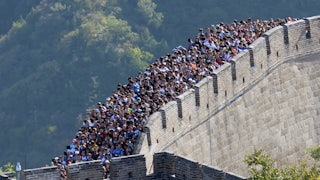On an evening in June 1924, a French colonial official named Merlin narrowly escaped an assassination attempt. He was visiting the city of Canton, in southern China, from Indochina, where he was posted. “The guests sat down to dinner at 8:30 p.m.,” Tim Harper writes in his new book, Underground Asia. Then, “just as the soup was being served, a man ‘rather luxuriously dressed’ appeared at one of the windows.” An eyewitness claimed this man surveyed the scene and then threw an attaché case through the window, which exploded, killing three people immediately, though not Merlin.
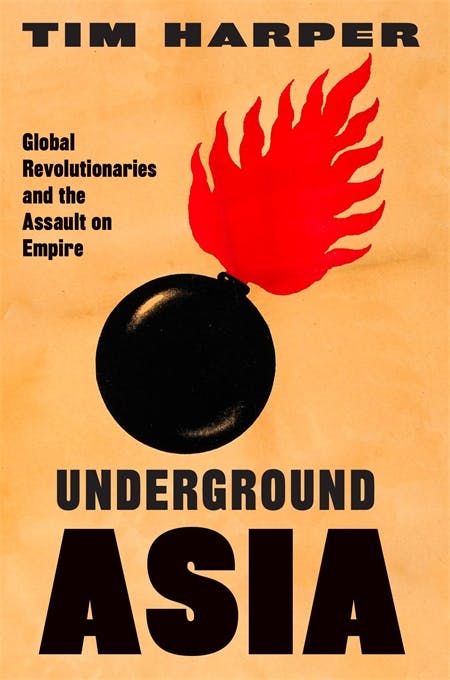
After an encounter with a police investigator, the activist jumped into the river. When his “bloated body washed up” on the shore, rumors flew and arguments raged over the assassin’s identity. The local French authorities balked at the notion that he was from Indochina, then a colony of France, despite the fact that the intended victim was based in Saigon. They insisted the attacker was Chinese and that China’s Nationalist Party, then in charge of part of Canton, was responsible for his actions. British diplomats insisted that the Chinese republican government fostered “anti-European societies of all sorts—Indians, Malays, Annamite [Indochinese], etc.” According to a September 1924 British Foreign Office report, Canton was thought to be full of “people’s bomb factories.”
Ultimately, it became clear that the assassin was Pham Hong Thai, an exile from Indochina who wrote a testament explaining his motives. “I am a Vietnamese who was born under the brutal rule of the French,” were its opening words. “Since I was young, I began to find certain approaches to resist the French and liberate my homeland.” He joined the “Vietnamese Revolutionary Army” and became part of a group of “around ten members” who were charged with killing Merlin. He claimed that performing this deed would be a fitting punishment for the “evil deeds” the official “had done in Vietnam,” and that he would not be “regretful” even if he should die because of the act. The sacrifice would be worth it if the assassination made “other nations understand the suffering of my people and help us.”
Activists like Pham Hong Thai, working to wrest their homelands from foreign control, are the subject of Harper’s magisterial book, which traces revolutionary struggles across Asia in the years between 1905 and 1931. The locales that interest him are cosmopolitan ports that were at least partly incorporated into Western empires—cities such as Canton, Kuala Lumpur, Singapore, and Saigon, which were magnets for militants on the move. In these places, exiles from “lost countries”—a term Harper borrows from an activist of the time to refer to colonized lands—could evade arrest by the police by lying low in hard-to-patrol dockland districts. In subdivided cities like Shanghai, which had a British-dominated International Settlement beside a separate French Concession, they had another option: Base themselves in alleyway apartments in the jurisdiction of an empire other than the one they opposed, and take advantage of imperial rivalries that limited cooperation between the law enforcement arms of different powers.
In many accounts of Vietnam’s liberation, figures like Pham Hong Thai appear only in the margins. Textbooks in present-day Vietnam and Cold War–era bestsellers in the West have tended to focus on Ho Chi Minh (whether they portray him as a hero, a villain, or a bit of both), the organization he led (a Moscow-supported party), and its guiding ideology (Marxism-Leninism). Harper encourages us to see things differently. He insists that the story of postcolonial liberation movements should be approached in a less top-down and teleological manner. The best narratives make room for false starts, the embrace and rejection of ideologies, and the founding and disbanding of organizations. They should also note the interactions between activists from different countries who forged cooperative arrangements, from small-scale study societies to international anti-colonial leagues, without help from Moscow or Washington.
For Pham Hong Thai, revolutionary struggle was about freeing Vietnam from French rule, but he cared about more than just his own country’s salvation. He was connected to a range of other movements. Before setting off his bomb, the assassin had trailed Merlin to Japan, where he met Korean activists. He realized that he and these militants had a common enemy—modern imperial projects of the sort launched first by Western countries and then by Japan, as well—since “one of the purposes of Merlin’s visit to Japan was to recognize Japan’s colonial occupation of Korea.” Pham’s bombing attempt also left an impression on the Chinese in Canton. Inspired by his anti-imperialist commitment, they raised funds to have his hastily buried remains reinterred in a “hallowed spot, next to the tomb of the ‘Seventy-Two Martyrs’ of the earlier 1911 Revolution” that had ended imperial rule in China. This reburial created a sense that Chinese and Vietnamese liberation were entwined, each an effort to upend the “established order.”
Harper does not simply challenge the conventional view of Vietnam’s history but also other Great Man accounts of liberation struggles in different Asian countries, from Indonesia to India, the Philippines to China. He does this through life stories of intriguing individuals, downplayed or completely ignored in standard histories because their approaches diverged sharply from those of the figures now seen as the key saviors of their countries, or because they moved between and influenced activists in different locales, meaning their actions do not fit in a single national frame.
In the first of these categories is Aurobindo Ghose. Ghose was born in Kolkata in 1872, and his Anglophile father gave him the English middle name “Ackroyd.” He was sent to study in England, where he got top marks at King’s College, Cambridge, and seemed destined to serve in the bureaucracy of the Raj. But he never gained a post in the Indian Civil Service. He passed the main part of the entrance examination only to stumble at “the final hurdle,” a required “horse-riding test” that he “repeatedly missed, effectively throwing” away his shot at officialdom. Rebellious by nature, he aligned himself with the most extreme elements in reformist parties, before feeling that even they were too tame and embracing an anarchist approach free from all party structures. He became the “guiding personality” behind an English-language periodical, Bande Mataram, a revered publication within anti-colonial circles in his native Bengal, founded in 1905. Ghose exerted great influence over younger activists via stirring calls for direct action that, as Harper puts it, combined anarchist themes with an “emphasis on ‘faith’ and ‘selflessness,’” which he insisted could make “the Indian struggle something more than a mere imitation of the west or a nationalism in ‘a purely materialistic sense.’”
Ghose has recently become the focus of specialist work in South Asian studies, but he finds no place in most general interest accounts of Indian independence, which treat Mahatma Gandhi’s nonviolent tactics, such as hunger strikes, as the key to the successful establishment of an independent India in 1947. Ghose long defended “India’s right to use violent means against the Raj,” and in 1907, the British authorities began hounding him, pinning him as the mastermind behind a bombing timed to coincide with the fiftieth anniversary of the 1857 Uprising, an event that some Indian activists tried to distance themselves from, due to its militancy and religious dimensions, but others viewed as an abortive first war for independence that should be followed by more sophisticated sequels. Ghose was tried for inciting violence but was acquitted, then abandoned secular politics, retreated from the “political world,” and made much of having “visions of visitations from Swami Vivekenada”—who had died in 1902.
Ghose reappears briefly later in the book, living as a fugitive from the British in “the French enclave of Pondicherry in south India” in 1913, writing to friends about a recent bombing “using a code from the tantric yoga” he was practicing. He expresses sympathy for those harmed by this act but stops short of condemning the violence, asserting instead that the “only criteria for judging” deeds targeting colonial officials are the result. In this case, the “success of the venture and the failure of the bhutas (‘ghosts,’ that is the police) to foil the perpetrators” is a sign it was justified.
In another section of Underground Asia, we meet a very different sort of forgotten figure, who falls out of standard frames partly because she had ties to two settings, China and Malaysia, typically treated separately. “At a quarter to eleven on Friday morning, 23 January 1925, the world revolution came to Kuala Lumpur,” Harper writes in introducing this activist, who was known by so many names that some simply called her the “Bobbed-Hair Woman.” We meet her making her way down the city’s High Street on the day in question, heading to the office where a colonial official she intends to kill works. She is a “young Chinese woman” of a “striking” appearance, as she is “not wearing a hat, as any respectable woman would do.” Her hair is “trimmed very short, in the modern style.” She carries a briefcase. She places it on a table. It explodes. Yet neither she nor her target is killed by the crude explosive, made up of “nails and fragments of a tin which “bore the words ‘Sperry Pure Rolled Oats,’” though both are injured.
Harper draws on pathbreaking work by feminist scholars working on different parts of Asia to illuminate the meaning of the Bobbed-Hair Woman. Her hairstyle marked her as a convention-flouting “Modern Girl,” a type “increasingly linked” to “a dangerous disordered modernity; to nihilism and to anarchy.” When arrested, she confessed to the crime of attempted assassination but refused to reveal a motive. Anger at the mistreatment of ethnic Chinese in Malaysia was thought to be one, but she eventually offered a different explanation: She described herself as a “universalist” who despised colonial officials for their role in “a system which hinders the progress of the world.”
Originally thought to have lived exclusively in Southeast Asia, the Bobbed-Hair Woman actually spent time in Shanghai and Beijing as well. Those were cities where short-haired women were often suspected of belonging to the Chinese Communist Party, which held that revolutionaries should work within disciplined parties. The Bobbed-Hair Woman, 26 in 1925, was among the rough contemporaries of Mao Zedong and Deng Xiaoping who opted for individualistic action. She was a kindred spirit to Pham Hong Thai, whose use of a bomb six months earlier in Canton seems to have provided a model for her. Both assassins were “the products of wild learning in all its creativity and its passion,” radicals who were hard to pigeonhole ideologically. The Bobbed-Hair Woman’s life did not end immediately after her assassination attempt, like Pham Hong Thai’s, but she, too, met a tragic end. Two years after walking down the High Street, trapped in a jail cell, with her hair grown out, she fashioned a rope from her own locks and used it to hang herself.
Famous figures such as Ho, Mao, and Gandhi appear in Underground
Asia. But in a historian’s equivalent to Tom Stoppard’s Rosencrantz and
Guildenstern Are Dead, which reimagines the plot of Hamlet from the
perspective of two minor characters, Harper has legendary leaders make cameos
in chapters devoted to less famous figures. We learn of Ho’s reaction to Pham
Hong Thai’s death in the same opening chapter that describes the explosion in Canton,
but only after we learn of the reaction of an older activist: Phan Boi Chau.
Phan Boi Chau was, in Harper’s words, a “scholar and reformer turned revolutionary and exile,” who in 1924 was 57 years old, living in Hangzhou, a Chinese city well to the north of Canton, and the “most celebrated national figure of his generation.” He coined the evocative phrase “the village abroad” to refer to the “community” of like-minded people “created actively by migration and exile,” whose residents included the widely traveled Ho and other activists on the move between Asian and Western ports. The peripatetic residents of this imaginary “village” exchanged ideas about tactics and swapped tracts wherever their paths crossed. They had their own secretive “networks of information that paralleled the new colonial posts and telegraph” and often helped one another stay a step ahead of the imperial authorities on their trail (though not always, as many spent long periods in jail cells). As in true villages, mutual aid patterns were essential to protecting individuals from disaster but not always able to ensure safety.
Today’s activists, some in exile, who are taking part in struggles to upend the “established order” in some parts of Asia, including those committed to using nonviolent methods, might feel a shock of recognition reading Harper’s book. Seeing terms like “lost country” and reading accounts of “village abroad” activists linked not by shared ideologies but by common concerns and a sense of fighting against long odds, sometimes set me thinking about contemporary activists from Thailand, Taiwan, and Hong Kong exchanging ideas and drawing inspiration from one another—even if now they exchange texts online rather than swap tracts by the docks in cosmopolitan ports.
